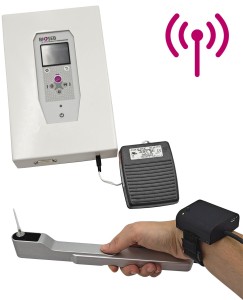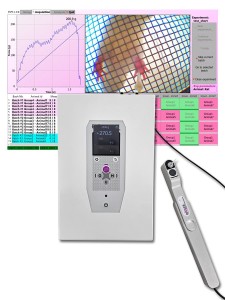Authors
M.D. Spanevello, S.I. Tajouri, C. Mirciov, N.D. Kurniawan, M.J Pearse et la
Lab
The University of Queensland, Queensland Brain Institute, Brisbane, Queensland
Journal
Journal of Neurotrauma
Abstract
Blocking the action of inhibitory molecules at sites of central nervous system injury has been proposed as a strategy to promote axonal regeneration and functional recovery. We have previously shown that genetic deletion or competitive antagonism of EphA4 receptor activity promotes axonal regeneration and functional recovery in a mouse model of lateral hemisection spinal cord injury. Here we have assessed the effect of blocking EphA4 activation using the competitive antagonist EphA4-Fc in a rat model of thoracic contusive spinal cord injury. Using a ledged tapered balance beam and open-field testing, we observed significant improvements in recovery of locomotor function after EphA4-Fc treatment. Consistent with functional improvement, using high-resolution ex vivo magnetic resonance imaging at 16.4T, we found rats treated with EphA4-Fc had a significantly increased cross-sectional area of the dorsal funiculus caudal to the injury epicenter compared to controls. Our findings indicate that EphA4-Fc promotes functional recovery following contusive spinal cord injury and provides further support for the therapeutic benefit of treatment with the competitive antagonist in acute cases of spinal cord injury.
BIOSEB Instruments Used
Electronic Von Frey 4 (BIO-EVF4),Electronic Von Frey 5 with embedded camera (BIO-EVF5)
Source :

 Douleur - Allodynie/Hyperalgésie Thermique
Douleur - Allodynie/Hyperalgésie Thermique Douleur - Spontanée - Déficit de Posture
Douleur - Spontanée - Déficit de Posture Douleur - Allodynie/Hyperalgésie Mécanique
Douleur - Allodynie/Hyperalgésie Mécanique Apprentissage/Mémoire - Attention - Addiction
Apprentissage/Mémoire - Attention - Addiction Physiologie & Recherche Respiratoire
Physiologie & Recherche Respiratoire




































 Douleur
Douleur Système Nerveux Central (SNC)
Système Nerveux Central (SNC)  Neurodégénérescence
Neurodégénérescence Système sensoriel
Système sensoriel Système moteur
Système moteur Troubles de l'humeur
Troubles de l'humeur Autres pathologies
Autres pathologies Système musculaire
Système musculaire Articulations
Articulations Métabolisme
Métabolisme Thématiques transversales
Thématiques transversales Congrès & Meetings
Congrès & Meetings 
